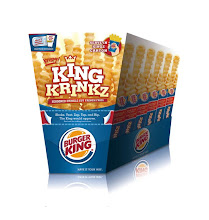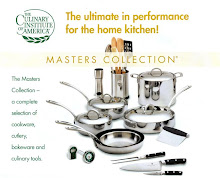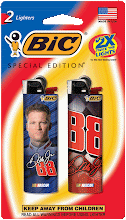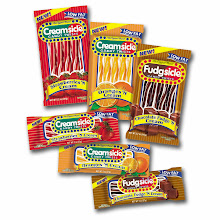
A
new study by Technomic could have been written by us.
It's nothing you haven't seen here or, if you're one of our clients or paid subscribers, have read months ago: consumers don't give a damn about market share, they're just hungry and want meal solutions, not hot air. The restaurant sector doesn't get it, for the most part. While a few brands like our client
Burger King have seen the light, most are still thinking a few bucks off their regular menu will lure recession-strapped customers back out to eat.
Others are saying it (like
Steve Johnson's "Grocerant" blog), but it has more weight when Technomic says it: supermarkets are developing what they call
"retailer meal solutions" (RMS). Grocers have some keen advantages over restaurants, including a wide selection of fresh, frozen and shelf-stable meal options:
"Are you hungry now, or do you want to eat that later?"
Technomic goes on to outline some other options grocers have over restaurants, including:
• Expanded meal alternatives
• Portion-size flexibility
• Increased focus on innovative menu items
• In-store restaurants and other “third-place” features
• In-store RMS events, including chef demonstrations and samplings
Now,
Wal-Mart just outsourced their in-store demonstrators, so don't think grocers are immune to dumb moves.
Technomic offered some trenchant advice to the retailer Grocerants:
1.) Get fresher: 87% of consumers say freshness is the key factor in purchasing a retailer meal solution or RMS. yet freshness is a problem with many grocers's food offerings.
2.) Get faster: Three quarters of those interviewed (74%) said convenience is critical in deciding whether to purchase a retailer meal solution.
3.) Offer more variety: Over 22% of those interviewed said they would purchase more RMSs if there were greater variety. C-store customers in particular would like more than greasy hot dogs and doughnuts.
4.) Understand your customer: Technomic found the same kind of ignorance among retailers as among restaurants about what kinds of RMS offerings consumers want and why they purchase them. For example, a majority said the food from grocers looked better than restaurant fare, while the quality of the ingredients used is perceived to be superior in restaurants.
Overall, Technomic found 75% of consumers purchase RMSs once a month vs. 33% who buy them weekly. The high-usage, low-frequency statistics signals a wide acceptance by the buying public, but that it has not yet replaced eating out.
Despite claims consumers want healthier fare, the hard evidence says they really want value and convenience. Packaging is a way to convey both, especially with individual portions, or meals that include an entree and a side in an easy-to-transport package.
Hey, have you seen the Burger King microwavable French fries to the right that cook and serve in the same, cool tear-off fry-pod carton?
This blog includes excerpts from a weekly round-up of food industry & food licensing news provided free to Broad Street Licensing Group's clients, and as a paid subscription service (6 months $695; 1 year $1,125).
Too busy to keep up with the news wires & publications about the food business? If you or your company would like to subscribe to our news service, call Danielle Foley at Broad Street Licensing Group (tel. 973-655-0598) and ask for your free sample or click on our website. 
.gif)



























